New Products & Services
September 2024
A novel spacer technology for RO membrane elements
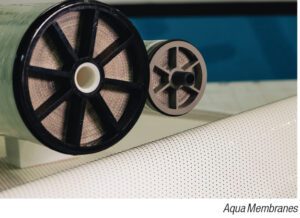 This company’s reverse-osmosis (RO) elements (photo) use a unique Printed Spacer Technology that improves the performance of systems with just the change of the membrane element. The technology replaces mesh spacers that have been used for decades with printed features on the membrane surface, improving the flow of water through the membrane element. Printed spacers open the feed channel inside of the element by using far less material. This results in superior spiral-wound membrane performance, improving system output, element life and energy usage, says the company. In addition to improved operations, customers also enjoy lowered operating costs and support meeting sustainability goals. The BW product line has two feed-spacer options: ECO, designed to save up to 60% of wasted energy, especially suitable for companies with challenging feedwater or those looking for ways to save on electricity costs and achieve their ESG goals; and FLO, which optimizes output by taking full advantage of the more than 500 ft2 of membrane surface. This configuration is ideal for applications where a system is struggling to keep up with demand, has limited space for a water treatment system, or is only operated for a short period of time. — Aqua Membranes, Albuquerque, N.M.
This company’s reverse-osmosis (RO) elements (photo) use a unique Printed Spacer Technology that improves the performance of systems with just the change of the membrane element. The technology replaces mesh spacers that have been used for decades with printed features on the membrane surface, improving the flow of water through the membrane element. Printed spacers open the feed channel inside of the element by using far less material. This results in superior spiral-wound membrane performance, improving system output, element life and energy usage, says the company. In addition to improved operations, customers also enjoy lowered operating costs and support meeting sustainability goals. The BW product line has two feed-spacer options: ECO, designed to save up to 60% of wasted energy, especially suitable for companies with challenging feedwater or those looking for ways to save on electricity costs and achieve their ESG goals; and FLO, which optimizes output by taking full advantage of the more than 500 ft2 of membrane surface. This configuration is ideal for applications where a system is struggling to keep up with demand, has limited space for a water treatment system, or is only operated for a short period of time. — Aqua Membranes, Albuquerque, N.M.
High-efficiency electrolysis for sodium hypochlorite
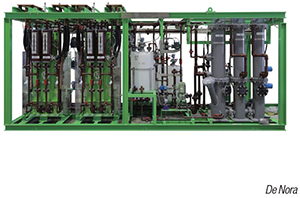 CECHLO-MS is an onsite, high-strength sodium hypochlorite generator (photo) with a patented ion-exchange membrane that safely produces 12.5% sodium hypochlorite, sodium hydroxide or chlorine gas. The technology is used for process water and wastewater treatment, including reuse applications, bleach manufacturing and wholesale chemical production. CECHLO-MS is a safe, economical and energy-efficient technology that poses no risks associated with delivering and storing hazardous chemicals and does not require special training or certifications, according to the manufacturer. Three simple and common consumables are required to generate the powerful chlorine-based disinfectant on-site: salt, water and electricity. At the heart of the CECHLO-MS 200 system is a highly efficient, proprietary electrolyzer. CECHLO-MS-200 systems are equipped with latest generation of this company’s proprietary DSA electrodes that help to maximize efficiency and energy savings. — De Nora, Milan, Italy
CECHLO-MS is an onsite, high-strength sodium hypochlorite generator (photo) with a patented ion-exchange membrane that safely produces 12.5% sodium hypochlorite, sodium hydroxide or chlorine gas. The technology is used for process water and wastewater treatment, including reuse applications, bleach manufacturing and wholesale chemical production. CECHLO-MS is a safe, economical and energy-efficient technology that poses no risks associated with delivering and storing hazardous chemicals and does not require special training or certifications, according to the manufacturer. Three simple and common consumables are required to generate the powerful chlorine-based disinfectant on-site: salt, water and electricity. At the heart of the CECHLO-MS 200 system is a highly efficient, proprietary electrolyzer. CECHLO-MS-200 systems are equipped with latest generation of this company’s proprietary DSA electrodes that help to maximize efficiency and energy savings. — De Nora, Milan, Italy
Drum screens made for high-flow and high-solids streams
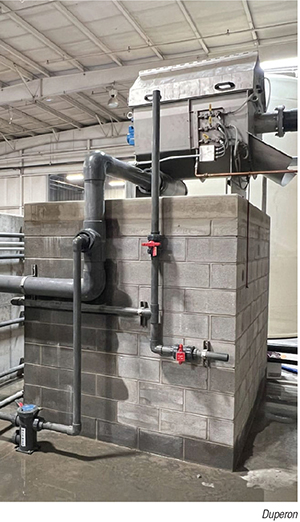 This company’s internally fed rotary-drum screen (photo), the first of a new Drum Line product family, applies proven and adaptive screening technology to fine screening for municipal and industrial water-treatment applications. Engineered for sites with both high flows and high solids content, the product is designed to manage difficult-to-capture debris and protect sensitive treatment processes, such as membrane bioreactors (MBR), from fine particles and fibers. The new drum screen is said to combine mechanical simplicity, trouble-free maintenance and long product life for treatment process reliability and increased efficiency. Key design features overcome the two major challenges historically associated with drum screening — clogging and corrosion. For instance, trunnion wheels have been replaced with stainless-steel shoes. The devices are also equipped with ultra-high molecular weight (UHMW) polyethylene, water-lubricated wear strips and a direct-drive system that eliminates chains and sprockets and is positioned outside of the wet area. With few wear parts, a fractional horsepower motor and minimal user intervention, users can reduce operating expenses. — Duperon Corp., Saginaw, Mich.
This company’s internally fed rotary-drum screen (photo), the first of a new Drum Line product family, applies proven and adaptive screening technology to fine screening for municipal and industrial water-treatment applications. Engineered for sites with both high flows and high solids content, the product is designed to manage difficult-to-capture debris and protect sensitive treatment processes, such as membrane bioreactors (MBR), from fine particles and fibers. The new drum screen is said to combine mechanical simplicity, trouble-free maintenance and long product life for treatment process reliability and increased efficiency. Key design features overcome the two major challenges historically associated with drum screening — clogging and corrosion. For instance, trunnion wheels have been replaced with stainless-steel shoes. The devices are also equipped with ultra-high molecular weight (UHMW) polyethylene, water-lubricated wear strips and a direct-drive system that eliminates chains and sprockets and is positioned outside of the wet area. With few wear parts, a fractional horsepower motor and minimal user intervention, users can reduce operating expenses. — Duperon Corp., Saginaw, Mich.
A rotating drum screen designed for septage handling
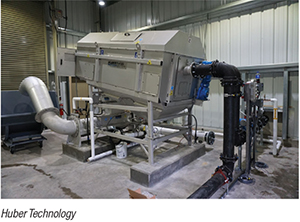 The RotaShield is a rotating drum screen (photo) offering high performance in extreme applications, such as sludge acceptance, because it protects the treatment facility from high-strength waste, rags, bottles, rocks, grease and grit. The screens’ unique design eliminates common issues associated with septage receiving and traditional auger-type screens, because it has no internal auger, trough, tank or seals. The RotaShield offers unloading up to 1,400 gal/min and can offer the convenience of unloading multiple trucks at the same time. RotaShield drums feature a compact, space-saving design with low energy demand. A completely encased unit, the stainless-steel design makes the RotaShield able to be sustained far beyond the traditional lifecycle of products in such corrosive environments, says the manufacturer. — Huber Technology, Inc., Denver, N.C.
The RotaShield is a rotating drum screen (photo) offering high performance in extreme applications, such as sludge acceptance, because it protects the treatment facility from high-strength waste, rags, bottles, rocks, grease and grit. The screens’ unique design eliminates common issues associated with septage receiving and traditional auger-type screens, because it has no internal auger, trough, tank or seals. The RotaShield offers unloading up to 1,400 gal/min and can offer the convenience of unloading multiple trucks at the same time. RotaShield drums feature a compact, space-saving design with low energy demand. A completely encased unit, the stainless-steel design makes the RotaShield able to be sustained far beyond the traditional lifecycle of products in such corrosive environments, says the manufacturer. — Huber Technology, Inc., Denver, N.C.
New renewable extruded carbon for odor removal
 AddSorb OX Series of coconut-shell-based extruded carbon materials are designed for use in odor removal in the biogas industry, offering high H2S capacity (minimum of 0.3 g/cm3). The product is a non-impregnated grade with low ash and high purity, and maintains the signature low pressure drop associated with pelletized carbon. This new grade of extruded carbon replaces products based on coal and other fossil fuels with alternative, renewable raw materials. With coconut shell as the primary raw material, the global warming potential of the AddSorb OX Series is significantly less than that of coal-based carbon. — Jacobi Carbons, Inc., Columbus, Ohio
AddSorb OX Series of coconut-shell-based extruded carbon materials are designed for use in odor removal in the biogas industry, offering high H2S capacity (minimum of 0.3 g/cm3). The product is a non-impregnated grade with low ash and high purity, and maintains the signature low pressure drop associated with pelletized carbon. This new grade of extruded carbon replaces products based on coal and other fossil fuels with alternative, renewable raw materials. With coconut shell as the primary raw material, the global warming potential of the AddSorb OX Series is significantly less than that of coal-based carbon. — Jacobi Carbons, Inc., Columbus, Ohio
This belt dryer operates at lower temperatures
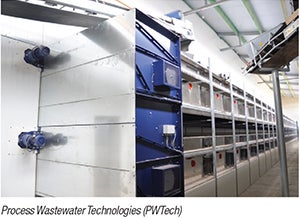 The PWTech plate belt dryer with Dorset technology differentiates itself from traditional belt dryers through its perforated steel plates. Unlike the woven belt found in conventional belt dryers, the perforated plate system lowers air resistance and ultimately energy consumption by up to 50%, and it can achieve two passes with each belt, says the company. The plates are available in stainless steel or powder-coated galvanized steel for protection against corrosion. Utilizing low-temperature heating, the system runs on hot water, allowing for multiple, and exchangeable heat sources, including waste heat, natural gas or a heat pump. Operating at a lower temperature, this plate dryer virtually eliminates the risk or fire or explosion, and reduces odors and dust. — Process Wastewater Technologies LLC (PWTech), Rosedale, Md.
The PWTech plate belt dryer with Dorset technology differentiates itself from traditional belt dryers through its perforated steel plates. Unlike the woven belt found in conventional belt dryers, the perforated plate system lowers air resistance and ultimately energy consumption by up to 50%, and it can achieve two passes with each belt, says the company. The plates are available in stainless steel or powder-coated galvanized steel for protection against corrosion. Utilizing low-temperature heating, the system runs on hot water, allowing for multiple, and exchangeable heat sources, including waste heat, natural gas or a heat pump. Operating at a lower temperature, this plate dryer virtually eliminates the risk or fire or explosion, and reduces odors and dust. — Process Wastewater Technologies LLC (PWTech), Rosedale, Md.
Asset-management software with utilities expertise
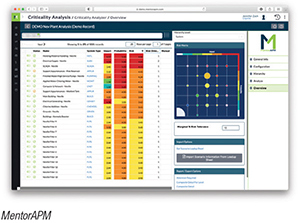 MentorAPM software (photo) delivers end-to-end asset-lifecycle management in a single platform. From work orders to capital plans, it helps identify risk, set priorities and target resources for a resilient and sustainable operation. The application, its architecture and over 335 asset models with libraries grew directly out of the founders’ experience working with diverse organizations across a broad spectrum of industry and large utilities. MentorAPM delivers strategies to balance performance, risk and cost constraints to extend asset life. Embedded best practices and asset-management intelligence help to accurately identify risk and the current condition of assets to offer decision-making support for targeted priorities. Booth 1241 — MentorAPM, Phoenix, Ariz.
MentorAPM software (photo) delivers end-to-end asset-lifecycle management in a single platform. From work orders to capital plans, it helps identify risk, set priorities and target resources for a resilient and sustainable operation. The application, its architecture and over 335 asset models with libraries grew directly out of the founders’ experience working with diverse organizations across a broad spectrum of industry and large utilities. MentorAPM delivers strategies to balance performance, risk and cost constraints to extend asset life. Embedded best practices and asset-management intelligence help to accurately identify risk and the current condition of assets to offer decision-making support for targeted priorities. Booth 1241 — MentorAPM, Phoenix, Ariz.
FRP safety structures now with specialized protective coatings
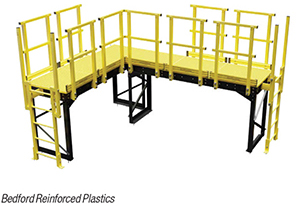 The ReadySeries lineup of fiberglass-reinforced plastic (FRP) products is said to be the broadest line of FRP modular structures for the water-quality industry. The ReadySeries family comprises platforms, mezzanines, walkways, catwalks, fixed ladders, handrails, guardrails, stairs, pedestrian bridges and more. Each modular product can be used independently or combined with other products in the series. A particular highlight of the series is the availability of the proprietary ReadyShield UV-resistant coating to protect against harsh weather, extreme heat and humidity, as well as potential for fiber bloom, which can expose and weaken fiber integrity. — Bedford Reinforced Plastics, Bedford, Pa.
The ReadySeries lineup of fiberglass-reinforced plastic (FRP) products is said to be the broadest line of FRP modular structures for the water-quality industry. The ReadySeries family comprises platforms, mezzanines, walkways, catwalks, fixed ladders, handrails, guardrails, stairs, pedestrian bridges and more. Each modular product can be used independently or combined with other products in the series. A particular highlight of the series is the availability of the proprietary ReadyShield UV-resistant coating to protect against harsh weather, extreme heat and humidity, as well as potential for fiber bloom, which can expose and weaken fiber integrity. — Bedford Reinforced Plastics, Bedford, Pa.
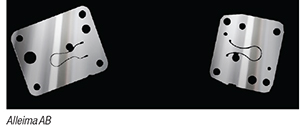 Freeflex Versa (photo) compressor-valve steel is a new material that contributes to designing smaller, more sustainable and more energy-efficient compressors for refrigerators and freezers. Building upon the success of its predecessors Hiflex and Freeflex Core, this martensitic stainless steel is engineered with a focus on catering to the unique requirements of reciprocating and linear technologies. Notable features of Freeflex Versa include exceptional fatigue resistance, outstanding wear resistance and the ability to contribute to noise reduction and downsizing, the company says. The compressor-valve steel is suitable for a variety of applications, including air-conditioning equipment, heat pumps, refrigerators, freezers and clothes dryers. — Alleima AB, Sandviken, Sweden
Freeflex Versa (photo) compressor-valve steel is a new material that contributes to designing smaller, more sustainable and more energy-efficient compressors for refrigerators and freezers. Building upon the success of its predecessors Hiflex and Freeflex Core, this martensitic stainless steel is engineered with a focus on catering to the unique requirements of reciprocating and linear technologies. Notable features of Freeflex Versa include exceptional fatigue resistance, outstanding wear resistance and the ability to contribute to noise reduction and downsizing, the company says. The compressor-valve steel is suitable for a variety of applications, including air-conditioning equipment, heat pumps, refrigerators, freezers and clothes dryers. — Alleima AB, Sandviken, Sweden
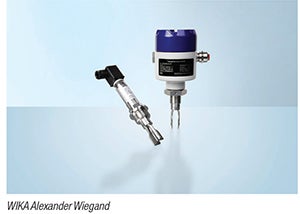 This company has supplemented its portfolio with a vibrating level switch (photo) that is suitable for all liquids, including highly viscous media. The new instrument is available in three variants for different market segments. The model TLS-S is intended for the process industries and can also be delivered with ATEX approval. Thanks to its hygienic design, the model TLS-H meets the requirements of the food and pharmaceutical sectors. The particularly compact model TLS-C has been designed for OEM applications. Due to its functional principle based on a tuning fork as the measuring element, the vibrating level switch enables precise limit-level monitoring in containers and pipelines, irrespective of the mounting position. — WIKA Alexander Wiegand SE & Co. KG, Klingenberg, Germany
This company has supplemented its portfolio with a vibrating level switch (photo) that is suitable for all liquids, including highly viscous media. The new instrument is available in three variants for different market segments. The model TLS-S is intended for the process industries and can also be delivered with ATEX approval. Thanks to its hygienic design, the model TLS-H meets the requirements of the food and pharmaceutical sectors. The particularly compact model TLS-C has been designed for OEM applications. Due to its functional principle based on a tuning fork as the measuring element, the vibrating level switch enables precise limit-level monitoring in containers and pipelines, irrespective of the mounting position. — WIKA Alexander Wiegand SE & Co. KG, Klingenberg, Germany
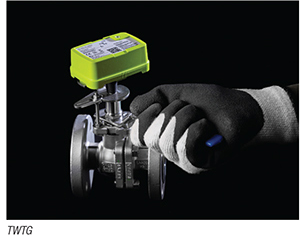 In July, this company released its newly redesigned NEON valve sensor (photo). The NEON QT valve sensor, distinguished by its adaptability, now features an entirely redesigned assembly for universal compatibility with any quarter-turn valve on the market. This innovation, coupled with a user-friendly 45-deg slotted bracket, allows for installation in under two minutes without valve operation or the need for calibration. This deployment with zero downtime is particularly suited for valves that cannot be adjusted during installation, such as those in continuous processes. The NEON valve sensor has been certified to operate safely in explosive atmospheres (ATEX zone 1/ IECEx class 1), with a temperature range from –40 to 80°C. — TWTG, Rotterdam, the Netherlands
In July, this company released its newly redesigned NEON valve sensor (photo). The NEON QT valve sensor, distinguished by its adaptability, now features an entirely redesigned assembly for universal compatibility with any quarter-turn valve on the market. This innovation, coupled with a user-friendly 45-deg slotted bracket, allows for installation in under two minutes without valve operation or the need for calibration. This deployment with zero downtime is particularly suited for valves that cannot be adjusted during installation, such as those in continuous processes. The NEON valve sensor has been certified to operate safely in explosive atmospheres (ATEX zone 1/ IECEx class 1), with a temperature range from –40 to 80°C. — TWTG, Rotterdam, the Netherlands
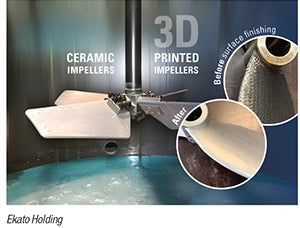 This company develops abrasion-resistant impellers using advanced materials and optimized designs. These innovations enhance equipment reliability and have proven successful in demanding applications, such as hydrometallurgy and pressure vessels, leading to extended lifespans and increased plant profitability. By reducing both initial and ongoing costs, the company’s ceramic impellers offer exceptional value to plant operators seeking superior performance and economic success. This company launched a development project to explore the use of hybrid manufacturing, which merges 3D printing with conventional methods. This approach enables the creation of complex geometries while remaining cost-effective, paving the way for highly efficient impeller designs. Hybrid and conventionally manufactured products can no longer be distinguished once the surface finishing process has been completed (photo), the company says. — Ekato Holding GmbH, Freiburg, Germany
This company develops abrasion-resistant impellers using advanced materials and optimized designs. These innovations enhance equipment reliability and have proven successful in demanding applications, such as hydrometallurgy and pressure vessels, leading to extended lifespans and increased plant profitability. By reducing both initial and ongoing costs, the company’s ceramic impellers offer exceptional value to plant operators seeking superior performance and economic success. This company launched a development project to explore the use of hybrid manufacturing, which merges 3D printing with conventional methods. This approach enables the creation of complex geometries while remaining cost-effective, paving the way for highly efficient impeller designs. Hybrid and conventionally manufactured products can no longer be distinguished once the surface finishing process has been completed (photo), the company says. — Ekato Holding GmbH, Freiburg, Germany
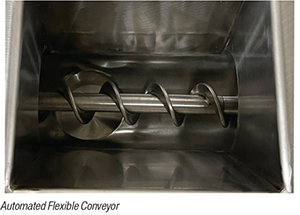 The flat-edge spiral-screw conveyor design (photo) features a broad, flat edge that minimizes the potential for aeration to add volume to low-bulk-density materials during transfer. Offered with the company’s Spiralfeeder flexible-screw conveyor, the new design is suitable for transferring cake mixes, starches, mica, fly ash, carbon black and other dry, low-bulk-density powders, pellets, flakes and granules. Consistent, uniform conveying at high throughputs is assured without clumping, clogs or compaction. Customized based on the material properties, target throughput rate and other factors, the flat-edge spiral design is machined from 100% stainless steel as standard and is available with a polished surface finish for sanitary processing. — Automated Flexible Conveyor, Inc., Clifton, N.J.
The flat-edge spiral-screw conveyor design (photo) features a broad, flat edge that minimizes the potential for aeration to add volume to low-bulk-density materials during transfer. Offered with the company’s Spiralfeeder flexible-screw conveyor, the new design is suitable for transferring cake mixes, starches, mica, fly ash, carbon black and other dry, low-bulk-density powders, pellets, flakes and granules. Consistent, uniform conveying at high throughputs is assured without clumping, clogs or compaction. Customized based on the material properties, target throughput rate and other factors, the flat-edge spiral design is machined from 100% stainless steel as standard and is available with a polished surface finish for sanitary processing. — Automated Flexible Conveyor, Inc., Clifton, N.J.
 This company has launched an upgraded version of Globaltherm HF, a high-temperature thermal fluid with one of the highest fluid flashpoints (280°C) on the market (photo). Its high flashpoint and blend of additives makes it a durable option for manufacturers operating thermal fluid systems. Globaltherm HF is suitable for applications requiring single-fluid heating and cooling applications, including plastics processing, molding, casting, paint and chemicals. It has an operating range from 5°C up to a maximum bulk temperature of 338°C. This heat transfer fluid delivers superior resistance to sludging and extreme oxidation found in many manufacturing environments, the company says. — Global Heat Transfer Ltd., Stone, Staffordshire, U.K.
This company has launched an upgraded version of Globaltherm HF, a high-temperature thermal fluid with one of the highest fluid flashpoints (280°C) on the market (photo). Its high flashpoint and blend of additives makes it a durable option for manufacturers operating thermal fluid systems. Globaltherm HF is suitable for applications requiring single-fluid heating and cooling applications, including plastics processing, molding, casting, paint and chemicals. It has an operating range from 5°C up to a maximum bulk temperature of 338°C. This heat transfer fluid delivers superior resistance to sludging and extreme oxidation found in many manufacturing environments, the company says. — Global Heat Transfer Ltd., Stone, Staffordshire, U.K.
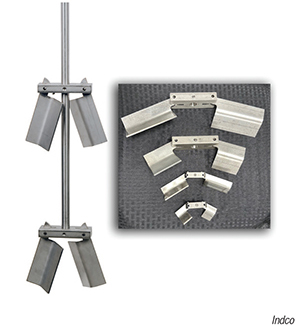 This company’s folding impellers (photo) are designed to enter through the small container openings often encountered in closed-lid mixing environments, then expand to their full operating diameter as the mixer shaft rotates. Standard two-blade folding impellers are sized for use with 2-in. standard bungs up to 6-in. tote openings. They have operational diameters from 2-3/8 to 14 in. The folding impellers provide high-performance mixing, ensuring homogeneity and efficiency. Closed-lid mixing minimizes the risk of external contamination, and reduces splashing and spillage, making clean-up faster and easier. Models are available in 304 and 316/316L stainless steel, with some small-diameter plastic impellers available for laboratory-scale applications. — Indco, Inc., New Albany, Ind.
This company’s folding impellers (photo) are designed to enter through the small container openings often encountered in closed-lid mixing environments, then expand to their full operating diameter as the mixer shaft rotates. Standard two-blade folding impellers are sized for use with 2-in. standard bungs up to 6-in. tote openings. They have operational diameters from 2-3/8 to 14 in. The folding impellers provide high-performance mixing, ensuring homogeneity and efficiency. Closed-lid mixing minimizes the risk of external contamination, and reduces splashing and spillage, making clean-up faster and easier. Models are available in 304 and 316/316L stainless steel, with some small-diameter plastic impellers available for laboratory-scale applications. — Indco, Inc., New Albany, Ind.
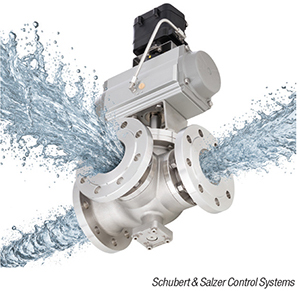 This three-way ball sector valve (photo) — said to be the world’s first — achieves high volumetric flowrates that are virtually identical in all directions. The company’s approach of using the ball sector design for three-way valves is said to be completely new, and achieves about 20% higher Kvs values than three-way valves with a conventional design. These high flowrates are achieved through the special design of the ball sector and the valve body. The resulting straight flow in one direction and the minimized flow deflection in the other result in the very high and almost identical Kvs values. Superior control accuracy is ensured by the optimized contour of the ball sector and its backlash-free bearing, together with the actuator and positioner. The positioning angle of 90 deg enables a very large control range to be achieved. The rangeability is 300:1. — Schubert & Salzer Control Systems GmbH, Ingolstadt, Germany
This three-way ball sector valve (photo) — said to be the world’s first — achieves high volumetric flowrates that are virtually identical in all directions. The company’s approach of using the ball sector design for three-way valves is said to be completely new, and achieves about 20% higher Kvs values than three-way valves with a conventional design. These high flowrates are achieved through the special design of the ball sector and the valve body. The resulting straight flow in one direction and the minimized flow deflection in the other result in the very high and almost identical Kvs values. Superior control accuracy is ensured by the optimized contour of the ball sector and its backlash-free bearing, together with the actuator and positioner. The positioning angle of 90 deg enables a very large control range to be achieved. The rangeability is 300:1. — Schubert & Salzer Control Systems GmbH, Ingolstadt, Germany
controlsystems.schubert-salzer.com
 This new state-of-the-art hybrid cooling system (photo) is designed to deliver exceptional thermal performance while minimizing environmental impact. The system offers a perfect balance between water and energy consumption while setting a new standard in the heat-rejection industry. Designed to bridge the gap between standard adiabatic coolers and cooling towers, the hybrid offers two cooling modes: dry and wet. In dry mode, heat is exchanged with ambient air via its sensible enthalpy. For wet mode, the system waters the coil and uses both the water-sensible and latent enthalpy via an adiabatic effect where air evaporates the water. This allows the system to work with ambient dry-bulb temperatures well above process-fluid outlet temperatures. — Kelvion Holding GmbH, Herne, Germany
This new state-of-the-art hybrid cooling system (photo) is designed to deliver exceptional thermal performance while minimizing environmental impact. The system offers a perfect balance between water and energy consumption while setting a new standard in the heat-rejection industry. Designed to bridge the gap between standard adiabatic coolers and cooling towers, the hybrid offers two cooling modes: dry and wet. In dry mode, heat is exchanged with ambient air via its sensible enthalpy. For wet mode, the system waters the coil and uses both the water-sensible and latent enthalpy via an adiabatic effect where air evaporates the water. This allows the system to work with ambient dry-bulb temperatures well above process-fluid outlet temperatures. — Kelvion Holding GmbH, Herne, Germany